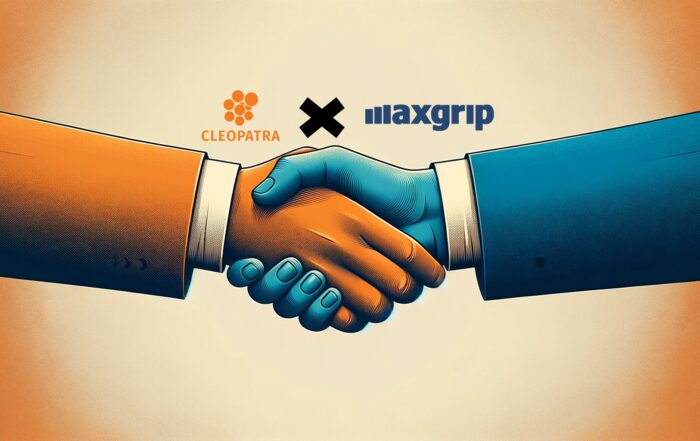The driving force for effective change within your company lies in the hands of the middle managers. These maintenance managers, operations managers and engineering managers, to name a few, are not part of the corporate management team and lead a team of technical workers on a day-to-day basis. Whatever the company ambitions (e.g. improving asset performance, accelerating digital transformation, extending the asset lifetime to save cost) change is always a component of a future strategy. As a consultancy firm specialized in helping companies realize those ambitions we know from experience that middle managers are paramount to success. Our consultants have listed the essential ingredients for middle managers to be effective change leaders.
Why middle managers are key
The key role that middle managers play to the company’s health and business continuity are often undervalued. Google is a famous example of a company that even eliminated their engineering managers altogether. This swiftly turned out to be a disastrous choice as middle managers were essential for Google’s business continuity, culture, facilitating collaboration and bringing out the best in employees through career development. They quickly reversed the change and implemented a new (middle) leadership program based on the learnings.
What is underacknowledged is the cross-company power that a middle manager has (as was the case at Google). They lead their technical team and speak the language of the shop floor while also communicating with senior management about strategy, KPIs and results. Moreover, middle management leaders have the best informal networks which they can use to make valuable contributions to the desired change.
Ingredient 1: Buy-In from Senior Management
So, it would make sense with their key role that middle managers have ownership of change programs. Nevertheless, we regularly see that senior managers have trouble with taking a backseat and putting their trust in their middle-management employees. In fact, a six year in-depth study of 200 middle and senior managers showed that middle managers clearly make valuable contributions to the realization of radical change at a company which, however, was not recognized by most senior executives at those companies. While it is understandably hard for a senior manager to put ownership with their lower level managers, it will be crucial for a program’s chances of success. The best senior managers can do is to actively show and communicate their support and commitment to their middle managers’ change leaders roles. Senior management must be aware of the fact that middle managers take up a risk as they stir up the current status quo and advocate for the new while retaining what already works. These leaders have to walk a tightrope managing the tension between continuity and change; managing expectations of all of the key stakeholders (vertically and laterally), holding on to existing strong capabilities while injecting new elements to accomplish adoption of the changes across the organization.
Case: Multi site assessment and deployment to increase OEE through asset management
A pharmaceutical company has a global excellence program for asset management. MaxGrip performed an assessment to scope the asset performance improvement potential (our Asset Improvement Mapping) at seven plants. With the recommendations, tailored to their locations, the site leaders then took ownership by creating their own improvement plans. These were communicated with and agreed on together with senior / corporate management. The site teams are in the lead to deploy the improvements, whereas corporate management and MaxGrip are closely involved to provide coaching and support. The Asset Improvement Program at those seven sites is on track to realize the expected Overall Equipment Effectiveness improvement of 1 to 2.5%.
Ingredient 2: Attention for Interpersonal Skills
In order to create any desired change, people’s behavior will also need to change. Typically, this starts with a core group of people who have a positive attitude towards the change; the so-called frontrunners. We often see middle managers being a part of this group and also taking up a leading role leveraging their extensive network, people knowledge and leadership skills. They coach and train, offer support and show exemplary behavior during the change process. To support them in their essential position, they should be able to hone their non-technical skills (often also called ‘soft skills’). These interpersonal skills are not always given the attention they deserve as these can greatly boost the effect and success rate of middle managers.
According to research among 2,000 workers of all levels, the three most important interpersonal skills are:
- Communication skills
- Leadership and influencing
- Empathy and fostering inclusion
It is no surprise that communication skills are seen as the top non-technical skill. This is essential for success on a personal level but also on team and company levels. All stakeholders have to be kept up to date on progress, need and want to understand ‘what’s in it for them’ and which milestones and (intermediate) goals need to be met by the team. Additionally, to realize internal buy-in, it is highly recommended to regularly communicate about best practices, praise exemplary change leaders and also to be transparent about setbacks.
To reflect the importance of all of interpersonal skills, it is advisable to involve the human resources department in an early stage of the change project. They can help with facilitating training and development programs for non-technical skills. It will also help to acknowledge the importance of these types of skills by embedding them in the job role descriptions, in balanced score cards and in vacancy descriptions, for example.
Ingredient 3: Incremental Change
A big change that affects the entire organization takes time to truly work, normally at least three years. Starting out small is a good way of keeping and growing internal support and adoption of the changes. Small can mean that you only start with deploying the improvements at a couple of sites, but it can also mean starting at all sites but with only one or two aspects of the change program (the ‘low hanging fruit’). This can be seen or treated as a pilot, before the change program gets upscaled or in the earlier phases of a change program. Middle managers are well positioned in organizations to facilitate these incremental steps of change. With their bird’s-eye view on the bigger picture and attention to executional success factors, they play a vital role in the process of change.
Moreover, in our deployment programs, MaxGrip consultants make use of clearly communicated milestones that divide a big and daunting program into smaller, incremental projects. It will allow for intermediate evaluations, feedback from all key stakeholders and continuous improvement loops to keep the total change program on track and in motion.
Case: Global deployment of EAM system with standardized approach
For a global brewery, MaxGrip has developed a blueprint for the global rollout of their new EAM system. We are now deploying this Enterprise Asset Management system with 36 production locations in 21 countries having been deployed and eleven sites to follow (adding eight countries). For this to be effective on a global level, we have a standardized deployment approach including toll gates that are signed off by local and corporate level stakeholders.
Early during the project we organize workshops with the production location to identify any deviations based on the standardized processes with roles and responsibilities. Gaps on process, organization, data and system are captured into an action plan for the local production site to follow up and close during the course of the project. The deployment is not only system focused, but success is also measured based on a standardized way of working with sharing best practices across the company.
Thanks to the new EAM blueprint and deployment, the sites are able to increase their OEE with 1-2%. The FMCG company is very happy with the project’s impact in increasing maintenance maturity and extended lifetimes of their assets.
📰 Download free whitepaper report of Industry Leaders Round Table
Get inspired
Cleopatra Enterprise and MaxGrip announce a strategic partnership to enhance Turnaround Management. This collaboration combines Cleopatra's cost engineering software with MaxGrip's Asset Performance Management expertise, aiming to optimize Shutdowns, Turnarounds, and Outages (STO) for clients worldwide.
When and how to use a business case to demonstrate the value maintenance and reliability departments bring to their organization.
All asset-intensive organizations fall somewhere on the maintenance maturity spectrum, whether by design or not. What is it that sets them apart?




